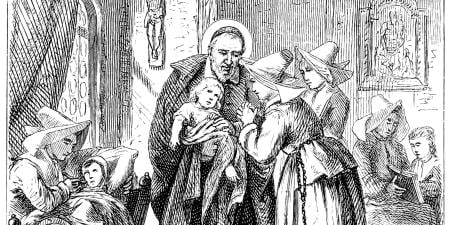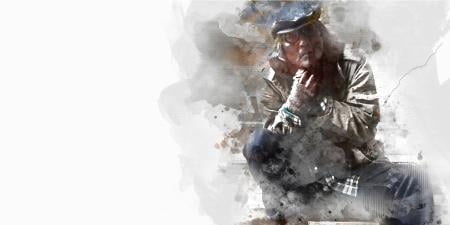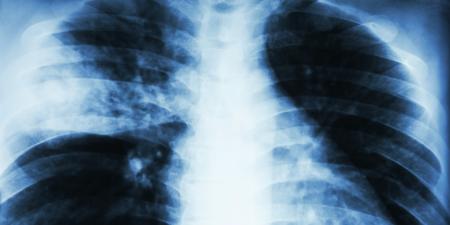Let’s suppose you are doing your primary care clerkship in a community health center and have just finished seeing Ms. M, a middle-aged patient who ran out of her diabetes medications a few months ago. She requests a refill. As you explore why she waited so long, you find out that she cannot always afford the copayment for them, and, even when she has the funds, she does not have reliable transportation. She tells you that she now has headaches and tearfully describes her difficulty sleeping. Scanning through her chart, you see that no one has offered her a mammogram or Pap smear in the past 5 years. As you gather your thoughts, you wonder how you can address all of her medical and nonmedical issues.
Who Are the Underserved?
The U. S. Census Bureau has reported that 50.7 million Americans (16.7 percent of the population) did not have health insurance in 2009 [1]. Previous studies have demonstrated that patients without health insurance are less likely to receive recommended preventive measures and screening and have poorer outcomes for chronic illnesses such as diabetes mellitus, cardiovascular disease, and cancer [2].
Moreover, certain urban and rural communities (designated as Health Profession Shortage Areas or Medically Underserved Areas by the federal Health Resources and Services Administration [3]) lack primary medical care, primary care physicians, and other health resources. Finally, factors such as transportation difficulties [4], limited health literacy [5], lack of fluency in English [6], low income level, and low education level [7] contribute to the designation of “underserved.”
Who Cares for the Underserved?
A number of physicians care for the underserved by practicing full time in public health systems and community health centers [8]. Other physicians volunteer part-time in local free clinics [9]. However, it is important to realize that a significant amount of care for the underserved is provided by physicians in private practice who treat Medicaid patients or provide charity care to patients who are unable to pay [10].
The American Medical Association defines the responsibilities of all physicians as follows:
Each physician as an obligation to share in providing care to the indigent…. All physicians should work to ensure that the needs of the poor in their communities are met. Caring for the poor should become a normal part of the physician’s overall service to patients [11].
Some medical students may have great interest in caring for the underserved, while others may not. The purpose of this paper is to encourage all medical students to take advantage of opportunities offered in medical school to learn to care for members of this population, since they will have a professional obligation to do so.
What Skills Are Needed?
Physicians who care for the underserved must have a number of skills, including ability to recognize that the patient may have unexpressed needs, an appreciation of local epidemiological factors, knowledge of community resources, and a willingness to take on the role of the patient’s advocate [12]. Other necessary skills include the ability to listen to and communicate with patients who are from other cultures or speak other languages, to demonstrate respect towards all patients, and to help them overcome the barriers of the health care system [13]. Physicians who treat underserved patients in the urban ambulatory setting must be prepared to manage chronic medical conditions, emotional issues, lifestyle counseling, and a greater number of problems per visit than those delivering care in other circumstances [14].
How Can I Prepare?
Required courses and clerkships. Most medical students care for the underserved in various rotations that occur in teaching hospitals or their medical schools [15]. While you will learn a great deal about different medical conditions (potentially in advanced stages of presentation), there is much more to learn than that. Take the time to get to know your patients, their family situations, their cultural identities, social situations, the barriers and challenges they face in dealing with their illnesses, and any other factors that may have contributed to the hospitalization. These hospital-based encounters can also help you learn to advocate for patients and help them navigate through the health care system. While less time is spent in medical school in the ambulatory setting, similar opportunities to learn to care for underserved patients occur through the family medicine and other required primary care clerkships.
Some schools have reorganized the preclinical courses and clinical clerkships in their 4-year curriculum to include experiences that prepare all of their students to care for patients whose socioeconomic status is low or who are in public insurance programs [16, 17]. The David Geffen School of Medicine at UCLA in partnership with Charles R. Drew University jointly offers a specific 4-year curriculum to train qualified applicants to care for the underserved, and this program has reported that a higher percentage of graduates from its first 10 years practice in underserved settings than graduates of a traditional curriculum at UCLA [18, 19].
Service-learning opportunities. Seifer notes that the Health Professional Schools in Service to the Nation (HPSISN) defines service learning as “a structured learning experience that combines community service with explicit learning objectives, preparation and reflection” and enables students to “provide direct community service but also to learn about the context in which service is provided, the connection between their service and their academic coursework, and their roles as citizens” [20].
Some schools offer service learning through required courses such as family medicine clerkships [21]. Students who participate in the project learn how community organizations address the barriers and challenges in underserved care.
Other schools provide service learning through electives. A frequently offered opportunity is participation in student-run volunteer clinics that care for homeless and underserved populations [22, 23]. In addition to providing opportunities for clinical learning, these volunteer experiences give students the opportunity to develop leadership skills and experience in organizing the health care delivery of the clinic to meet the patients’ needs.
Electives and longitudinal tracks/pathways. Some schools have 4-year longitudinal tracks or pathways on underserved care for students with strong interest in this area. These tracks or pathways typically include didactic seminars, clinical care of patients in an underserved setting, and community-based projects [24-27]. Other schools have tracks or special electives that focus on rural practice and report a higher proportion of graduates practicing in rural settings than traditional curricula [28-30].
Extracurricular opportunities. Finally, there are extracurricular programs that help students learn more about delivering care in underserved areas. One example is the Albert Schweitzer Fellowship program, which has chapters in many American cities [31]. Students selected for this program conduct a health service project in the community, developing leadership skills and gaining experience in conducting community projects.
Motivation to Care for the Underserved
Studies have identified positive factors that motivate physicians and help them maintain an interest in caring for the underserved. These factors include the desire to make a difference, the creativity to address multiple issues with limited resources, flexibility, the ability to work with others as a team, and the commitment to serve a specific community or population group [32, 33]. In addition, a number of physicians practice in underserved settings because they view their work as a calling, a “deeply felt motivation for work that goes beyond the satisfaction of the worker’s material and social needs” [34].
Conclusion
What is your calling as a physician? Some of you know that you are called to care for the underserved. Others may be unsure about your calling or what type of practice setting you will choose in the future. No matter what your interest or calling is, you will most likely have patients like Ms. M in the future. If you are not prepared to care for her, who will?
References
-
DeNavas-Walt C, Proctor BD, Smith JC; US Census Bureau. Current Population reports: income, poverty, and health insurance coverage in the United States: 2009. US Census Bureau. http://www.census.gov/prod/2010pubs/p60-238.pdf. Accessed July 8, 2011.
-
Institute of Medicine. Care Without Coverage: Too Little, Too Late. Washington, DC: National Academies Press; 2002.
-
Health Resources and Services Administration. Shortage designation: health professional shortage areas and medically underserved areas/populations. http://bhpr.hrsa.gov/shortage/. Accessed May 20, 2011.
- Yang S, Zarr RL, Kass-Hout TA, Kourosh A, Kelly NR. Transportation barriers to accessing health care for urban children. J Health Care Poor Underserved. 2006;17(4):928-943.
- Hawkins AO, Kantayya VS, Sharkey-Asner C. Health literacy: a potential barrier in caring for underserved populations. Dis Mon. 2010;56(12):734-740.
- Flores G, Abreu M, Tomany-Korman SC. Limited English proficiency, primary language at home, and disparities in children’s health care: how language barriers are measured matters. Public Health Rep. 2005;120(4):418-430.
- Kagawa-Singer M, Pourat N. Asian American and Pacific Islander breast and cervical carcinoma screening rates and Healthy People 2000 objectives. Cancer. 2000;89(3):696-705.
- Iglehart JK. Spreading the safety net--obstacles to the expansion of community health centers. N Engl J Med. 2008;358(13):1321-1323.
- Darnell JS. Free clinics in the United States: a nationwide survey. Arch Intern Med. 2010;170(11):946-953.
- Cunningham PJ, Hadley J. Effects of changes in incomes and practice circumstances on physicians’ decisions to treat charity and Medicaid patients. Milbank Q. 2008;86(1):91-123.
-
American Medical Association Council on Ethical and Judicial Affairs. Caring for the poor. JAMA. 1993;269(19):2533-2537.
- Reilly BM, Schiff G, Conway T. Primary care for the medically underserved: challenges and opportunities. Dis Mon. 1998;44(7):320-346.
- Hobson WL, Avant-Mier R, Cochella S, et al. Caring for the underserved: using patient and physician focus groups to inform curriculum development. Ambul Pediatr. 2005;5(2):90-95.
- Blankfield RP, Goodwin M, Jaen CR, Stange KC. Addressing the unique challenges of inner-city practice: a direct observation study of inner-city, rural, and suburban family practices. J Urban Health. 2002;79(2):173-185.
-
Wear D, Kuczewski MG. Perspective: medical students’ perceptions of the poor: what impact can medical education have? Acad Med. 2008;83(7):639-645.
- Doran KM, Kirley K, Barnosky AR, Williams JC, Cheng JE. Developing a novel Poverty in Healthcare curriculum for medical students at the University of Michigan Medical School. Acad Med. 2008;83(1):5-13.
- Turner JL, Farquhar L. One medical school’s effort to ready the workforce for the future: preparing medical students to care for populations who are publicly insured. Acad Med. 2008;83(7):632-638.
- Ko M, Edelstein RA, Heslin KC, et al. Impact of the University of California, Los Angeles/Charles R. Drew University Medical Education Program on medical students’ intentions to practice in underserved areas. Acad Med. 2005;80(9):803-808.
- Ko M, Heslin KC, Edelstein RA, Grumbach K. The role of medical education in reducing health care disparities: the first ten years of the UCLA/Drew Medical Education Program. J Gen Intern Med. 2007;22(5):625-631.
- Seifer SD. Service-learning: community-campus partnerships for health professions education. Acad Med. 1998;73(3):273-277.
-
Brill JR, Shore WB, Stearns MA, et al. The medical home is in the community! Community projects start-up to sustainability [abstract]. Fam Med. 2011;43(Suppl 3):8.
-
Society of Student-Run Free Clinics. Society of Student-Run Free Clinic profiles. http://www.studentrunfreeclinics.org/index.php?option=com_comprofiler&task=usersList&listid=4. Accessed May 20, 2011.
- Clark DL, Melillo A, Wallace D, Pierrel S, Buck DS. A multidisciplinary, learner-centered, student-run clinic for the homeless. Fam Med. 2003;35(6):394-397.
- Godkin MA, Savageau JA, Fletcher KE. Effect of a global longitudinal pathway on medical students’ attitudes toward the medically indigent. Teach Learn Med. 2006;18(3):226-232.
- Carufel-Wert DA, Younkin S, Foertsch J, et al. LOCUS: immunizing medical students against the loss of professional values. Fam Med. 2007;39(5):320-325.
- Manetta A, Stephens F, Rea J, Vega C. Addressing health care needs of the Latino community: one medical school’s approach. Acad Med. 2007;82(12):1145-1151.
- Huang W, Malinow A. Curriculum and evaluation results of a third-year medical student longitudinal pathway on underserved care. Teach Learn Med. 2010;22(2):123-130.
- Lang F, Ferguson KP, Bennard B, Zahorik P, Sliger C. The Appalachian Preceptorship: over two decades of an integrated clinical-classroom experience of rural medicine and Appalachian culture. Acad Med. 2005;80(8):717-723.
- Smucny J, Beatty P, Grant W, Dennison T, Wolff LT. An evaluation of the Rural Medical Education Program of the State University of New York Upstate Medical University, 1990-2003. Acad Med. 2005;80(8):733-738.
- Rabinowitz HK, Diamond JJ, Markham FW, Santana AJ. Increasing the supply of rural family physicians: recent outcomes from Jefferson Medical College’s Physician Shortage Area Program (PSAP). Acad Med. 2011;86(2):264-269.
-
Albert Schweitzer Fellowship. Our programs. http://www.schweitzerfellowship.org/features/programs/. Accessed May 20, 2011.
- Li LB, Williams SD, Scammon DL. Practicing with the urban underserved. A qualitative analysis of motivations, incentives, and disincentives. Arch Fam Med. 1995;4(2):124-133.
- Odom Walker K, Ryan G, Ramey R, et al. Recruiting and retaining primary care physicians in urban underserved communities: the importance of having a mission to serve. Am J Public Health. 2010;100(11):2168-2175.
- Curlin FA, Serrano KD, Baker MG, Carricaburu SL, Smucker DR, Chin MH. Following the call: how providers make sense of their decisions to work in faith-based and secular urban community health centers. J Health Care Poor Underserved. 2006;17(4):944-957.



